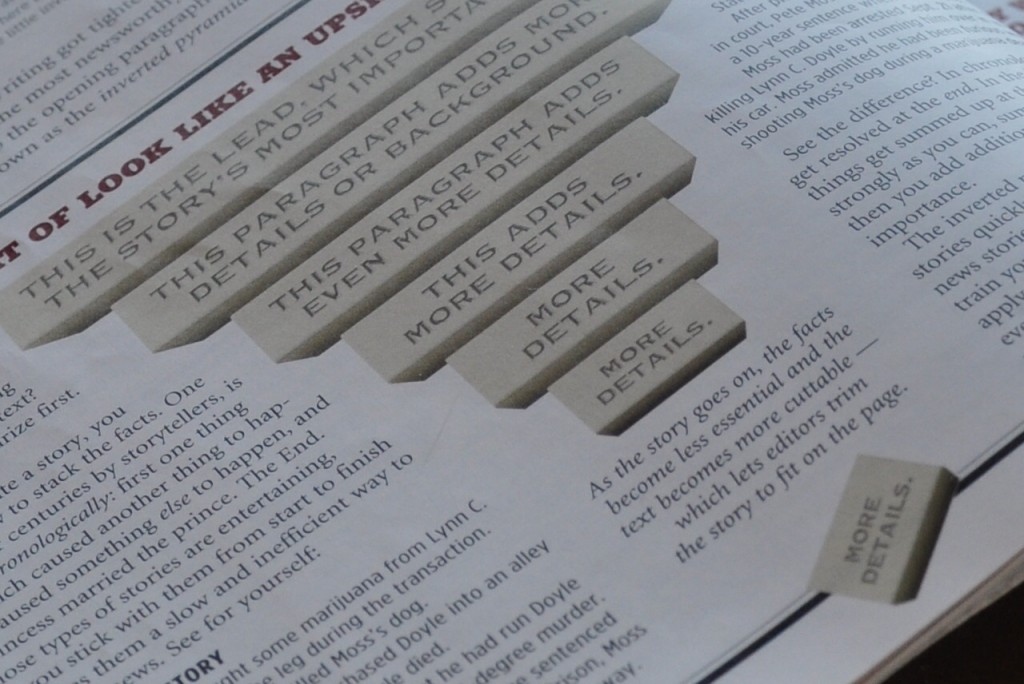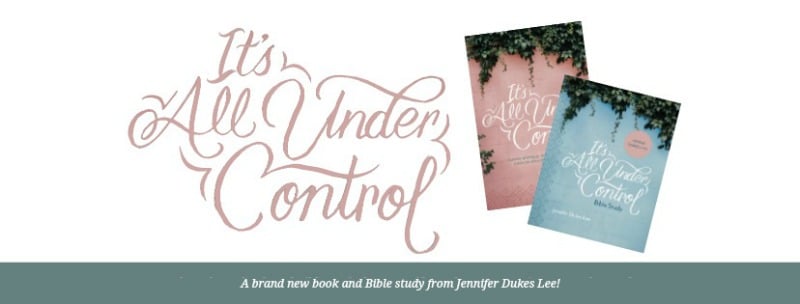Life Lessons from the Inverted Pyramid
For more than a century, news reporters have crafted stories by writing the most important facts in the opening paragraphs of a story. As the story continues, the facts become less relevant.
It’s known as the inverted pyramid.
I’ve written thousands of stories with the facts stacked that way — starting with the most relevant pieces of information. These days, I teach the technique to college journalism students. In essence, we are giving away the ending in the opening paragraph, reversing what storytellers have done for centuries when they stack facts chronologically.
It goes against our instincts as writers.
In a book, you’ll often wait until the last pages to learn that the prince and princess lived happily ever after. In news, however, we tell you up front that “the butler did it.”
Newspaper legend has it that the inverted pyramid was developed during the Civil War when reporters transmitted stories from the battlefield by telegraph, an unreliable method of dispatching the news. Stories would sometimes get cut off mid-sentence, before revealing who won the battle. Editors asked reporters to begin their stories with the most important information, adding lesser details later. Relevance trumped everything; the inverted-pyramid was born.
Today, if stories need to be shortened because editors don’t have enough room on the page, they can trim from the bottom. The most relevant parts of a story are preserved, instead of landing on the cutting-room floor.
{And what if I stacked
a life upside-down
like that?}
On Fridays, she gives us a word-prompt and asks us to “stop, drop, and write” for five minutes flat. Today’s prompt: RELEVANT.




Wow! I learned something today. I thought that the inverted pyramid was a leadership model.
Thanks for this relevant lesson.
In one sense, Dea, I think it *is* a leadership model — though not originally intended as that. I think this newswriting technique offers us a way to really live a life, by keeping the relevant stuff on top. Too often, in my rush-rush life, the most important stuff ends up on the cutting floor.
We have another saying in journalism. It’s calling “burying the lead,” when a reporter has put the real news deep into the story, instead of putting it right where it belongs — toward the top. (Perhaps that’s another lesson for me in this journey.)
I appreciate you stopping by today, Dea. Have a great weekend. 🙂
detail on the tail.
get to the point.
like on voice mail messages…ugh! you just want people to get to the point and leave a number that you can understand.
it’s not a poetry reading!
Newspaper legends. For some reason that makes me laugh….newspaper legends…hehehehe.
LOL, Nancy. News and legend… Yeah, that’s kind of twisted. 🙂
And what if I stacked my life upside-down like that?
Oh, WOW! When others read the story of me, my life, how I pray they see Jesus right off the top, in the opening word, in the first paragraph of who I am.
I love this….and the way it turned my thinking (and hopefully my living!) upside down!
Awesome post!
~Stacy
Stacy,
I love how you say that. ..That’s the Good News news-story right there — Gospel inked on a life — the one with Christ in the lead paragraph. Thanks for sharing!
Ahhhh.
Well, lemme see if I can live this way. 🙂
I’m caught between the want-to and the actual doing it. Thanks for dropping by, Monica.
Once we’re done slicing off my bottom layers of lesser relevance, I’m not sure I’d have much of an actual pyramid shape left.
I remembered while reading this the pier in St. Petersburg where there is a building constructed as an inverted pyramid. Dad and Uncle W.’s other brother was involved in the design once upon a time: http://www.stpetepier.com/gallery_photos/004%20PierLights0278a.jpg
Now that, my sweet friend, will preach! Love to you!
Living an inverted pyramid–that’s going to keep me reflecting for a while, imagining how it would be, trying on ways.
Thanks.
My dad, a former city editor and lifelong journalist, would get so frustrated with me if I didn’t talk to him inverted pyramid style. “Get to the point!” he would demand. And then he would remind me how reporters are instructed to write, and how he would chop off the end, and by then, my story was all dried up and my big ending that I was trying to surprise everyone with…spoiled.
Having grown up the child of an inverted-pyramid-style father, though, I have noticed that most men prefer to receive information in that manner. My husband patiently waits for my O. Henry endings (as Dad would call them), but I know he’d secretly prefer I just give him the facts up front.
I had to chuckle when I read Ann’s comment above because my husband would completely agree: “just give me the facts.” Of course, as opposites attract, I love the details.
Loved how you put the twist at the end…praying that I can let Jesus be my lead in every way.
Thanks!
I learned this method from a mentor with the Christian Writer’s Guild and love knowing the history of it. You have a way with words and that is all that needs to be at the top of this pyramid today.
hmmm….I wonder if I can live this way..Isn’t this how we are supposed to live the Christian life? I think I find myself falling sadly short of the inverted pyramid. Awesome post…
This is an awesome concept. It had me thinking of an obituary. The top line? “She was saved by grace, faith alone in Christ.” That one statement says it all. The other details are just lagniappe.
This reminded me, for some reason, of Job. “1 In the land of Uz there lived a man whose name was Job. This man was blameless and upright; he feared God and shunned evil.” Kind of sums it up from the beginning and sets the stage for the rest of the story. 🙂
This has me thinking.
What would be left if all the irrelevant in my life was eliminated? I think I’d like the first sentence to read, “She loved and followed Jesus.” The end.
I LOVE that, Sandra. Love YOU.